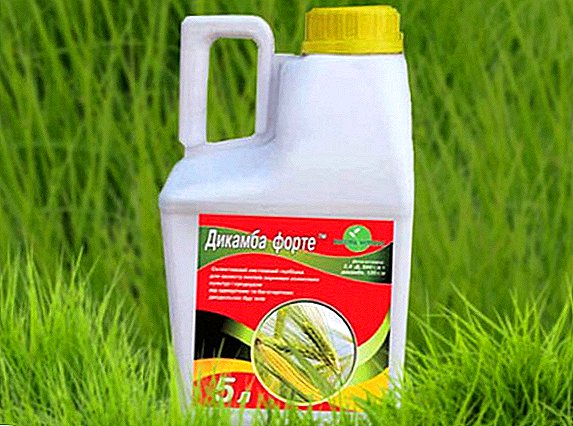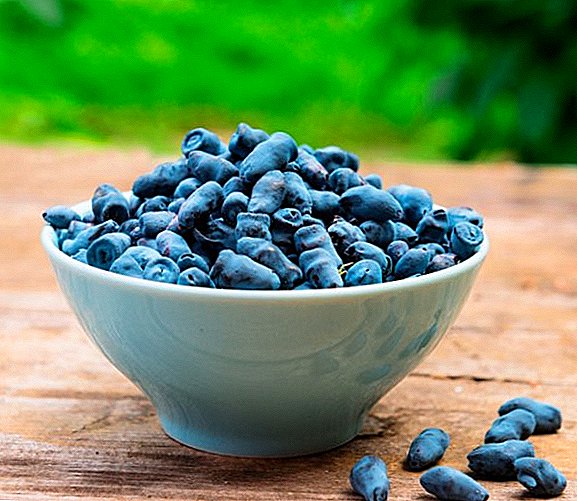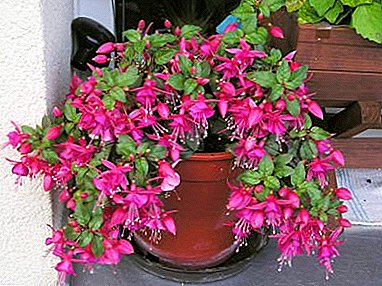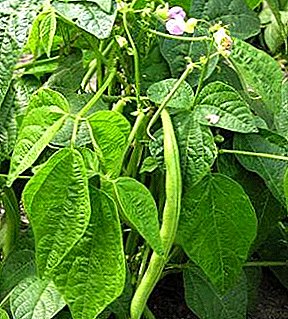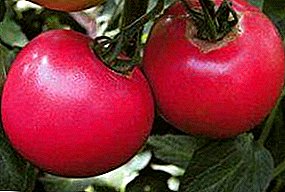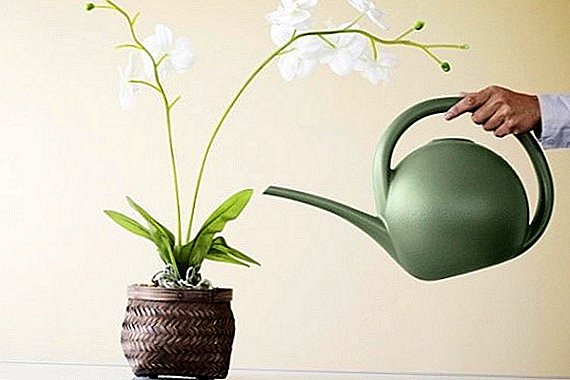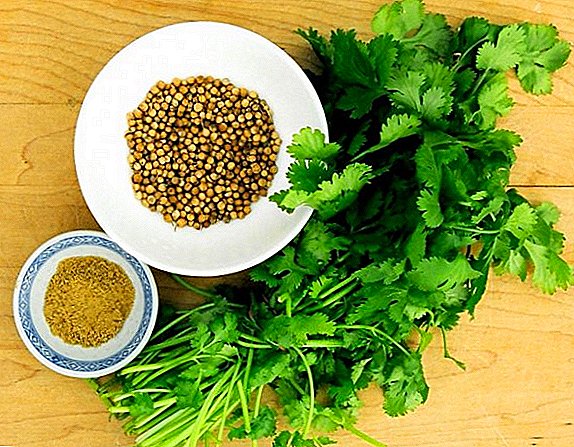 Indian and Georgian cuisine would not be so distinctive without cilantro or coriander - an aromatic spice that is added to the traditional dishes of these peoples. What is the difference between coriander and cilantro, how useful this plant is, how to use it properly - let's take a closer look.
Indian and Georgian cuisine would not be so distinctive without cilantro or coriander - an aromatic spice that is added to the traditional dishes of these peoples. What is the difference between coriander and cilantro, how useful this plant is, how to use it properly - let's take a closer look.
Cilantro and coriander - the difference
Some novice cooks are mistaken, thinking that coriander and cilantro are completely different plants. In fact, this is the same plant and the same crop - vegetable coriander. Directly called coriander seeds and root, and cilantro - the green part. Although it is one and the same plant, its parts smell differently and have a different taste. Other names of the plant: chicken, chilandro, kolyandra, kinji, hamem.
Did you know? Coriander is a "plant of love", or a natural aphrodisiac - even in ancient India it was used to increase libido and increase sexual desire.

How Coriander Looks: Botanical Description
Coriander is an annual herb having an unusual fusiform root. The height of the stem varies from 40 to 80 cm, in the branched upper parts of the stems inflorescences are formed. Flowers are small, often white or pink, have the shape of umbrellas. The leaves of cilantro are mostly wide-blade, large, with wide lobules and long petioles. Leaf color is predominantly dark green, uniform. The fruit is very characteristic of the umbrella family - spherical, dry, double seed.
It is known that cilantro is not only an excellent seasoning for food, but also a very healthy plant. Find out the composition, beneficial properties and contraindications of cilantro.The plant blooms in mid-summer, and the fruits ripen to the beginning of autumn. Coriander contains a rich set of chemicals: magnesium, iron, vitamins A, B, C, fiber, minerals and useful acids - this is not a complete list of components. Such a concentration of useful elements led to the fact that cilantro is used not only as a spice, but also for therapeutic purposes.

What is the use of plants
Coriander has such beneficial properties:
- stimulation of appetite, acceleration of metabolism;
- choleretic and diuretic effect;
- antihemorrhoic effect;
- antifungal action;
- treatment of viral infections, colds, and expectorant properties;
- antiseptic and wound healing properties;
- prevention of scurvy and many diseases of the stomach, including duodenal ulcer;
- treatment of conjunctivitis, glaucoma and other eye diseases;
- carminative and diaphoretic effect;
- elimination of allergic manifestations;
- reducing menstrual cramps, improving reproductive health;
- preventing uterine bleeding and improving lactation;
- strengthening immunity and general well-being.
In addition to cilantro, for the strengthening of immunity are also used: visible stonecrop, purple stonecrop, bee pollen, pine pollen, pumpkin, Tibetan lofant, yucca, Crimean iron, sauerkraut and walnut partitions.In addition, healing coriander reduces pressure, strengthens the gums, eliminates caries and stomatitis, treats itching and relieves joint pain. In folk medicine, coriander is most often used to treat colds, as well as to get rid of worms.

Important! The use of coriander should be limited when taking antibiotics - cilantro can conflict with the active components of the drug, which increases the risk of allergic rash and other side effects.
Application features
Coriander fruits have a high concentration of essential oil - it is added not only as a flavoring in some dishes, but also used as a component of healing wound-healing creams and medicines.
The green leafy part of the plant acts as a spice - cilantro can be added to all dishes that use parsley. Seeds are used only in dried form (fresh ones have an unpleasant odor and taste): the longer the dried seeds are stored, the spicier they get. Cilantro can be used both in fresh and dried form, but fresh leaves can be consumed only in small quantities. 
In medicine
Fruits and leaves of cilantro are predominantly healing properties, therefore, only these parts of the plant are used to prepare medicines. The grass is harvested and dried throughout the summer period, but the fruits are saturated with useful components and essential oil only by mid-August. Essential oil is used for neurological disorders, added to expectorant tinctures, used to treat inflammation and purulent rashes. From the leaves, curative decoctions are used to treat diseases of the urogenital system, indigestion, they are used to relieve inflammation of the gums and some skin diseases.
For the preparation of healing decoction of coriander, you will need:
- dry seed of cilantro - 10 g;
- water - 250 ml.

Cooking:
- Pour the cilantro seed with clean water, put on the fire and bring to a boil.
- Boil for 4-6 minutes, remove from heat and let stand for 60 minutes. Strain.
For treatment of indigestion, this broth is taken in the amount of 50 ml three times a day on an empty stomach, the course of treatment is up to 5 days. With cystitis and inflammation of the urinogenital system, half a glass is drunk half a glass three times a day 20 minutes before meals. The course of treatment is 10 days, then a break is taken for 5-7 days.
Like coriander, digestive problems also include: bathing, calendula, sage (salvia), meadow, linden, chervil, lyubka double, watercress, yucca, dodder, viburnum buldenezh, goldenrod, onion slizun, peanut, oregano (oregano ) and Kale cabbage.
 For the treatment of hemorrhoids in alternative medicine this tea is successfully used:
For the treatment of hemorrhoids in alternative medicine this tea is successfully used:
- dry leaves of coriander - 50 g;
- grass yarrow - 50 g;
- licorice root - 50 g;
- water - 250 ml.
Important! Fresh green coriander can not be consumed in large quantities during menstruation - this can lead to a malfunction and the formation of certain pathologies of the female reproductive system.
Cooking:
- All ingredients are ground to a powder.
- Pour a tablespoon of the prepared powder into the kettle, pour 250 ml of boiling water, wrap the kettle with a towel and leave to infuse until completely cool. Strain.
This tea is drunk 10 ml on an empty stomach before bedtime 1 time per day. The course of treatment varies from 14 days to 3 months. 
For the treatment of gastritis and duodenal ulcers, the so-called coriander sugar is used:
- cilantro dry seed - 30 pieces;
- sugar - 40 grams.
Cooking:
- Cilantro seeds and sugar grind in a coffee grinder or blender to the consistency of powder.
- Pour the powder in a glass container and close tightly with a lid (store in a dry dark place, do not allow moisture).
- Heat 200 ml of water, pour 2 teaspoons of coriander powder. The medicine is ready for use.
For colds, they also use medicinal vervain, anemone (anemone), nutmeg, amaranth, linden, onions, elecampane, bathing, raspberries and meadow sage.This drink is taken twice a day 15 minutes before meals. In addition, this medicine is good for relieving pain in the stomach, improves appetite, reduces gas and increased acidity of the stomach.

In cooking
Green cilantro has a pleasant citrus note that gives dishes a refined aroma and taste. This spice is great for meat and fish, it is used to make curry sauces and chutneys. These greens can be added to traditional soups and dishes, cook fresh vegetable or warm meat salads with it, add to potato casserole, and use when marinating vegetables.
Pasta made from boiled cilantro and cheese is spread on pita bread, preparing a traditional Georgian appetizer, making pesto sauce from its leaves, and chopped sunflower seeds are added to meat pies and sausages. In addition, cilantro is a part of such traditional Georgian dishes as tkemali, soup-kharcho, lobio.  Best of all cilantro is combined with olive oil, but also with sour cream or mayonnaise forms a great blow. In England, cilantro is added to the best sorts of cheese, in France coriander seeds are sprinkled with cereal croissants, and in Belgium light beer is brewed with a greenish froth, generously seasoned with coriander and orange peels.
Best of all cilantro is combined with olive oil, but also with sour cream or mayonnaise forms a great blow. In England, cilantro is added to the best sorts of cheese, in France coriander seeds are sprinkled with cereal croissants, and in Belgium light beer is brewed with a greenish froth, generously seasoned with coriander and orange peels.
Fresh cilantro green harmonizes well with onions, basil, garlic, fennel, cumin, and its seeds with oriental spices (zira, turmeric, etc.). Cilantro and coriander are almost universal seasonings, which in a new way reveal the taste of the dish and complement it with a fresh citrus aroma. The main thing - do not be afraid to experiment.
Did you know? Due to the high self-seeding capacity and good vitality of seeds, cilantro can be called a weed plant. And in some counties in Britain, for example, it grows like a weed.

Who should not eat coriander: harmful properties
Like most products, coriander has some harmful effects, which manifests itself mainly as a result of its excessive consumption. First of all, it is worth noting that fresh cilantro herbs are best used sparingly: a raw plant can cause unpleasant sensations in the stomach, and even stool disorders. In addition, from the use of cilantro need to refrain:
- pregnant women (cilantro, like parsley, can provoke premature labor);
- people with ischemic heart disease and myocardial infarction;
- patients suffering from blockage of veins and thinning of blood vessels;
- hypotensive and stroke survivors;
- children up to 6 years.
If you want to eat cilantro also in winter, consider how to dry, freeze, pickle and store coriander in the marinade for the winter.The unique aroma and healing properties not only made coriander one of the most popular seasonings in cooking, but also determined its use in cosmetology, traditional medicine and perfumery. Cilantro is an unpretentious plant that you can easily grow in your backyard, and include this useful spice in your daily diet.
Video: coriander and coriander, is it the same?
Feedback from users of the network about coriander







